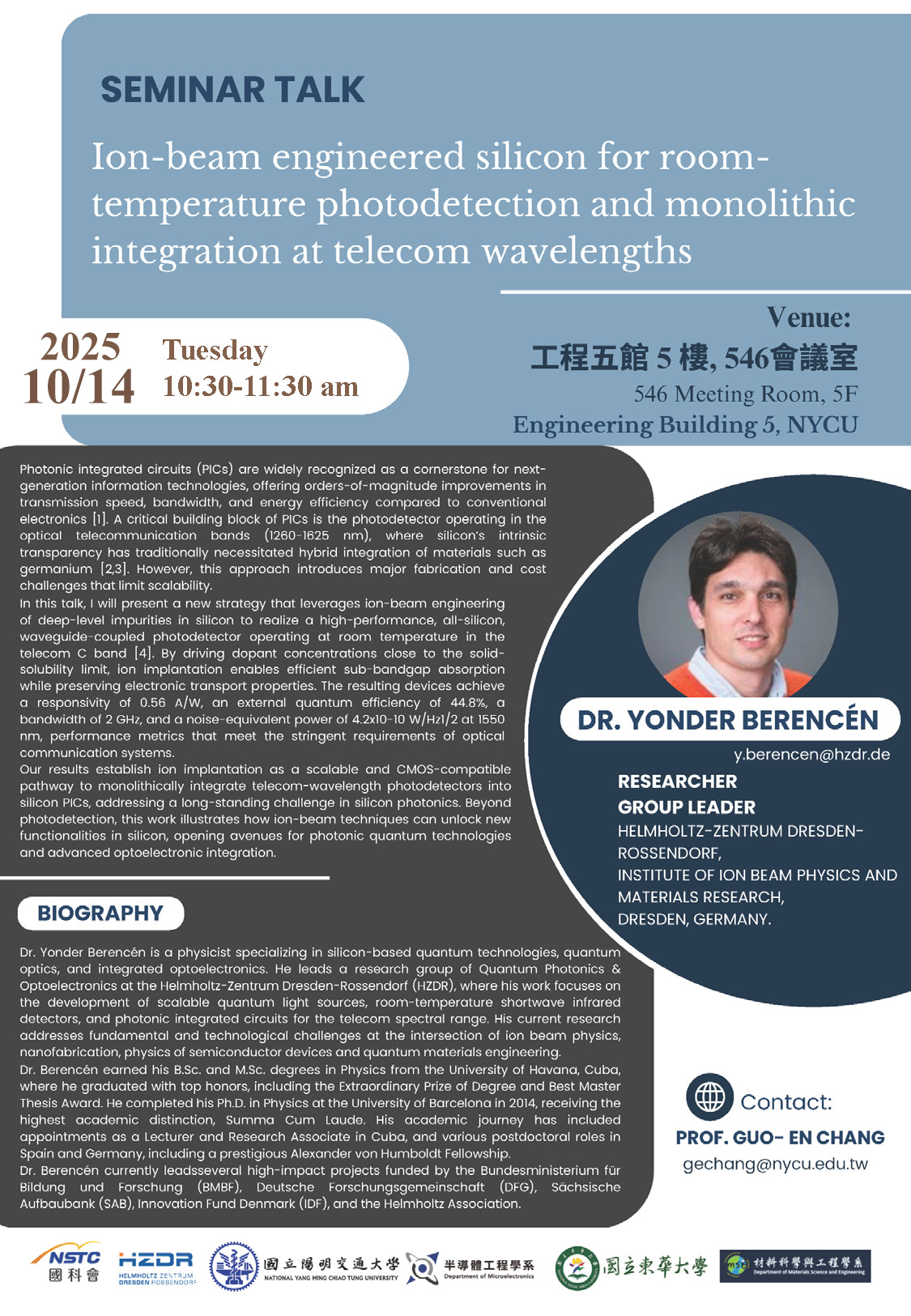[演講公告]10/14(二)10:30~11:30 :Dr. Yonder Berencen專題演講
*** You all are welcome to join !!!
Ion-beam engineered silicon for room-temperature photodetection and monolithic integration at telecom wavelengths
※Speaker :Dr. Yonder Berencen/ Helmholtz-Zentrum Dresden-Rossendorf, Institute of Ion Beam Physics and Materials Research, Dresden, Germany
※Host : Prof. Guo-En Chang 張國恩教授 (Department of Microelectronics)
※Date : 2025-10-14 (Tuesday)
※Time : 10:30~11:30am
※Location :R546, Engineering Building 5, NYCU (GuanFu Campus) 工程五館5樓546室
※Abstract: Photonic integrated circuits (PICs) are widely recognized as a cornerstone for next-generation information technologies, offering orders-of-magnitude improvements in transmission speed, bandwidth, and energy efficiency compared to conventional electronics [1]. A critical building block of PICs is the photodetector operating in the optical telecommunication bands (1260-1625 nm), where silicon’s intrinsic transparency has traditionally necessitated hybrid integration of materials such as germanium [2,3]. However, this approach introduces major fabrication and cost challenges that limit scalability.
In this talk, I will present a new strategy that leverages ion-beam engineering of deep-level impurities in silicon to realize a high-performance, all-silicon, waveguide-coupled photodetector operating at room temperature in the telecom C band [4]. By driving dopant concentrations close to the solid- solubility limit, ion implantation enables efficient sub-bandgap absorption while preserving electronic transport properties. The resulting devices achieve a responsivity of 0.56 A/W, an external quantum efficiency of 44.8%, a bandwidth of 2 GHz, and a noise-equivalent power of 4.2×10-10 W/Hz1/2 at 1550 nm, performance metrics that meet the stringent requirements of optical communication systems.
Our results establish ion implantation as a scalable and CMOS-compatible pathway to monolithically integrate telecom-wavelength photodetectors into silicon PICs, addressing a long-standing challenge in silicon photonics. Beyond photodetection, this work illustrates how ion-beam techniques can unlock new functionalities in silicon, opening avenues for photonic quantum technologies and advanced optoelectronic integration.


